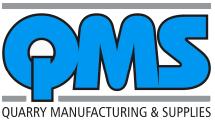New crusher wear parts help Norwegian quarry save energy

A Metso-optimized crushing chamber helps Norsk Stein’s Jelsa Quarry save 500MWh per year
An optimized crushing chamber in a primary gyratory can, in addition to higher capacity, have a positive effect on energy costs. Metso’s crushing chamber optimization project at Jelsa Quarry has helped Norsk Stein save around 500 MWh of electricity per year while still delivering the expected results.
With the re-engineered crushing chamber and special wear-protection material, the power consumption of Jelsa Quarry’s primary gyratory crusher was reduced from 0.21kWh to 0.15kWh per one ton of material crushed. This result was achieved without compromising crushing capacity and wear life.
After having successfully lowered the crusher power draws, Metso and Norsk Stein are continuing their close co-operation to significantly extend the current crushing chamber’s wear life.
Metso’s wide metallurgical portfolio combined with application experience offer the next steps in achieving a significantly longer life for crusher wear parts. The customer’s requests and timing expectations concerning service and wear parts change-out intervals were taken into account in the design work.
During the Jelsa Quarry extension project in 2009–2011, as well as Metso tertiary cones, screens and conveyors, a 63–75 primary gyratory crusher was assembled.
The gyratory crusher met the capacity requirements of 2,600–3,000 tons/h, except for the challenges caused by high power spikes. These spikes could reach 1000kW, especially when crushing with worn wear parts.
In many cases, the original mantles had cracked prematurely, causing unexpected production stops. As a critical component of Jelsa’s entire process, the primary gyratory wear problem had to be resolved. On the customer’s proposal, Metso accepted the task of re-engineering the non-Metso brand crushing chamber with their Chamber Optimi service.
To solve the problem, Metso studied all the details, engaged in several discussions with the customer, and took the necessary measurements during quarry visits. A task group comprising Finland’s and the US’s best experts in wear parts materials and primary gyratory crusher technologies was set up.
As a result of the engineering studies, Metso proposed an optimized cavity, including a one-piece, 3.3m tall, 13-ton floating-type mantle, casted of ductile XT525 manganese steel and composed of concave segments. The design of the new cavity made use of Metso’s state-of-the-art simulation tool, optimizing the chamber profile.
Metso’s steel foundry in Tampere, Finland made the casting using its new patternless special molding technique and supplied the parts in a short lead time
The re-engineered crushing chamber design contained customized features to prevent pressure spikes and excessive crushing force. The concave segments were casted using three different alloys in order to achieve the optimum gradient type, abrasion resistance and the ductility needed for each concave tier.
The new crushing chamber’s choke zone was set to the optimum position, and the problem with fine materials flow through the cavity was resolved. A higher throughput could be achieved with a smaller stroke, as well as a reduced cupping risk, due to the more balanced crushing chamber.
The first new mantle and concave segments were installed in early August 2012 and after 2 million tons of material was crushed the company reported impressive power savings. The second wear part set, assembled in the beginning of this year [2013], features several improvements to prevent the loosening of the mantle.
Tor Gautestad, plant manager at Jelsa Quarry, commented: ‘According to Metso’s simulation tool, the new cavity design should increase the throughput capacity by 10%. But since we are not able to utilize the boosted capacity in the primary crusher, a stroke reduction of 10% was the target instead. It was impressive to see how the actual capacity and power draw matched the simulated values exactly.
‘Operation with the new cavity is significantly smoother, with fewer and lower power peaks. Even towards the end of the cavity’s lifetime, the operation remains smooth and the cavity profile close to optimal. Minor modifications are still necessary to fully utilize the wear parts, and this is progressing continuously in close co-operation with the experts from Metso.’



